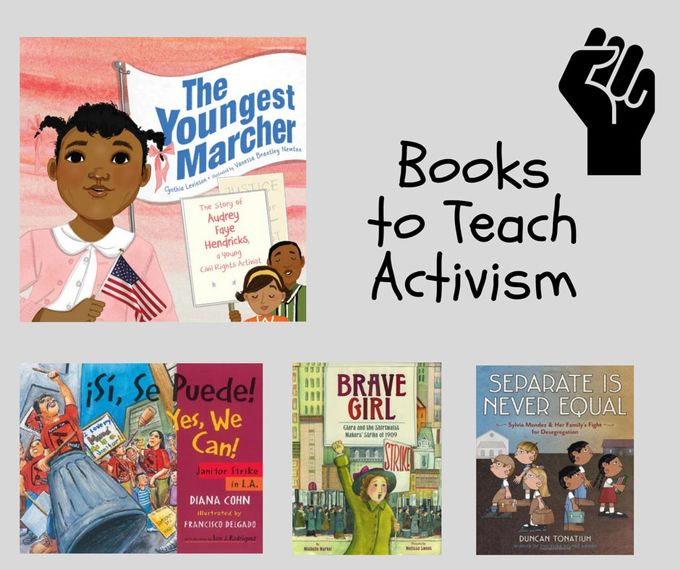
Today’s post-Columbine generation has never known a world without school shootings. Last Wednesday, thousands of students and teachers across the country participated in National Walkout Day in response to the mass shootings at Marjory Stoneman Douglas High in Parkland, FL. They were met with mixed reactions from district officials, some of whom prohibited participation, citing security risks, disruptions to learning, and the need to refrain from expressing political views during the school day as justification. In some instances, students were physically blocked from exiting the building by school employees.
We argue that this is a missed opportunity for meaningful learning about the democratic process and for teaching students how to advocate for their rights. Furthermore, teaching is a political act; it is impossible to take a neutral stance when making curricular decisions, choosing which books to include or exclude in our classrooms, and deciding whose voices and histories are being told and valued. We believe our students should not be asked to divorce their rights to freedom of speech or expression upon entering school. As educators, we owe it to our students to create spaces where they have the right to safely express their views and where their voices are valued.
In a field driven by top-down mandates, educators’ voices are often stifled and silenced, creating a culture of compliance. As the instructional coach at my school, I, Marie, was approached by many teachers who wanted to be a part of the movement to honor and show solidarity with the victims of Stoneman Douglas High School. I agreed that this was an important opportunity to teach students about civic engagement, but the teachers and I felt limited in what we could do as a result of the district’s communication that outlined appropriate activities, so I reached out to Katie to brainstorm possible solutions.
After careful consideration, we decided that literature could create a conduit for conversations centered around social change. We encouraged teachers to read aloud Separate Is Never Equal: Sylvia Mendez and Her Family’s Fight for Desegregation by Duncan Toniatiuh, which examines the Mendez family’s actions that led to school desegregation. The text was used as the foundation for classroom discussion, which provided reflection for taking action.
Students connected the events in the text to current conversations around policy change. They channeled their feelings through authentic writing experiences—students chose to write letters to first responders, to the students of Stoneman Douglas High School, or to fellow classmates. They shared words of gratitude for the first responders, expressed feelings of hope and encouragement to the victims, and stated their desire to end school violence. Knowing a group of students organized and led the movement added an element of genuine awe as these elementary students began to realize how powerful a group of young people can be. They learned that they too have a voice and can make a difference.
Real world reading, writing, and discussion were used as tools to foster meaningful response and to help students cope and support each other. Through each modality, a deeper understanding of their experiences was embraced in a caring and nurturing environment within the classroom community. Choosing to advocate for our students in this way allowed us to frame the larger ideas concerning the school shooting.
At such a pivotal moment, teachers embraced tough conversations and provided a framework for future activism. Students who participated in National Walkout Day experienced an important movement as part of living history that takes learning far beyond the pages of the textbook and stretches beyond their classroom and school walls. Even when banned from participating, educators still found ways to engage their students in valuable lessons about the democratic process while imparting essential literacy, social, and life skills.
Other books to teach young students about social activism include the following:
- The Youngest Marcher: The Story of Audrey Faye Hendricks, A Young Civil Rights Activist by Cynthia Levinson (Simon & Schuster, 2017)
- Brave Girl: Clara and the Shirtwaist Makers’ Strike of 1909 by Michelle Markel (HarperCollins, 2013)
- Sit-In: How Four Friends Stood Up by Sitting Down by Andrea Davis Pinkney (Little, Brown, 2010)
- Malala Yousefzai: Warrior With Words by Karen Leggett Abouraya (StarWalk Kids Media, 2014)
- Let the Children March by Monica Clark-Robinson and Frank Morrison (Houghton Mifflin, 2018)
- ¡Sí, Se Puede! / Yes, We Can! by Diana Cohn (Cinco Puntos Press, 2005)
Katie Stover Kelly is an associate professor of education at Furman University in Greenville, SC, and coauthor of From Pencils to Podcasts: Digital Tools to Transform K-6 Literacy Practices (Solution Tree, 2017) and Smuggling Writing: Strategies That Get Students to Write Every Day, in Every Content Area, Grades 3-12 (Corwin, 2016). Her new coauthored book with Lester Laminack will be published by Heinemann this fall. Find her on Twitter @ktkelly14.
Marie Havran is an elementary instructional coach in Greenville, South Carolina, and an adjunct professor at Furman University. Find her on Twitter @MarieHavran.